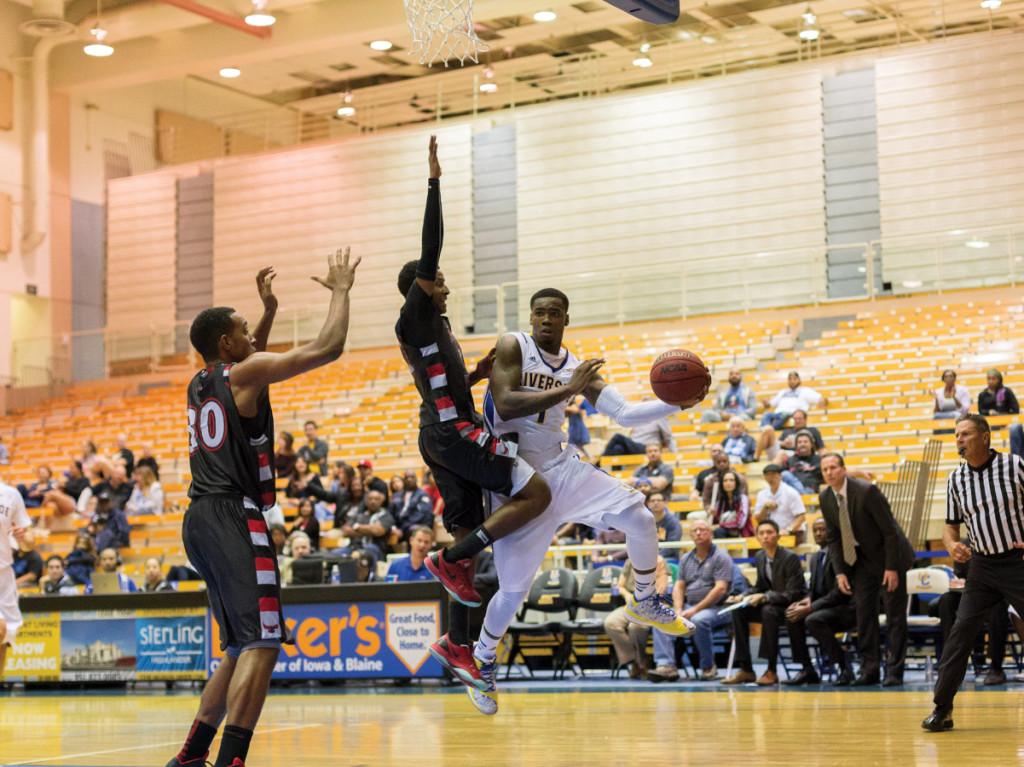
College athletics are a huge deal. Millions of people watch and billions of dollars are spent on student-athletes dunking a ball or tackling an opponent. And whatever the reason for people watching it, there’s no denying that there’s a huge audience for college sports. That’s why nobody can get through the month of March without their newsfeeds blowing up about March Madness, that singular time of year when people suddenly become obsessed with flow charts. (That’s really all a tournament bracket is!)
It’s not just basketball, either. College football is immensely popular, and the first attempts to set up playoffs for the sport resulted in viewership on par with the NFL playoffs. The National Collegiate Athletics Association (NCAA) governs upward of 20 college sports. Given the NCAA’s 2011-2012 revenue of over $800 million, it’s not hard to imagine that somebody out there enjoys watching collegiate rifle shooting. In comparison, UCR’s 2013-2014 budget for the entire campus clocked in at a relatively tiny $564 million.
At the same time, athletics coaches at public institutions are the top-paid public employees in 39 states, often receiving seven figures in compensation annually. Nick Saban, the head coach of the University of Alabama’s football program, just last year signed onto a $6.9 million per year contract. A nonprofit set up to help fund the football program also bought him a house. Before Saban was rolling in the big bucks, it was Mack Brown who was earning $5 million a year, a more-than 500 percent increase since he was first hired in 1997.
With so much money going to the NCAA and to athletics coaches, you’d expect college athletics to be an immensely lucrative business for colleges. But oddly enough, that’s not necessarily the case. Almost half the teams participating in the March Madness basketball bracket either broke even or lost money on their programs last year. Not exactly a winning record.
What’s more, there’s no real link to the salaries coaches receive and the revenue their athletics departments take in. Paying coaches more does not necessarily lead to more revenue, or to a winning record. One need look no further than UCR’s very own head baseball coach, Troy Percival, who was hired on earlier this academic year to much acclaim, but whose season has been just a little lackluster. To be sure, he has time to turn the program around, but his stated goal of getting to the playoffs this year never came close to materializing.
Athletics are expensive. There’s bus tickets for away games, plane tickets for even-more-away games and hotel accommodations. Then, there’s all the training equipment and everything else that players need for practice before they actually play the games. And that’s all before the coaches and training staff actually get to be paid.
Coaches are paid wads of cash, but their performance isn’t really tied to the success of an athletics program or how much revenue that program makes. Little of that money is actually going to the student athletes since they don’t get paid, except for some funds in the form of scholarships or equipment. And with athletics programs not necessarily profitable, the question is worth asking. Why are we spending this much money?
One could make the case that colleges aren’t meant to be for-profit institutions, and so they shouldn’t care about whether their athletics departments are turning a profit. Spending money on the sport is for the good of the game and for the benefit of the players. If that’s the case, then it certainly would make more sense to start paying the student athletes who play the game just a tad more than what they’re currently making (zilch). Even so, that money could be spent on research throughout the UC system. Finding a cure for malaria or creating a faster, more heat-efficient computer processor are all things that can be accomplished with greater funding. They, too, may not turn a profit, but are arguably at least as important as funding a baseball team.
The mission of a university isn’t to fund sports teams — it’s to expand horizons and share ideas. This is not to say that athletics have no place in a university. They should, and they’re a vital part of the college atmosphere by providing an outlet for people’s unique skills and talents. Scholarships for student athletes should continue to exist to reward hard-working individuals for their time and efforts.
There’s no reason sports should be as big of a money sinkhole as they currently are. We can start toning down the amount of money we pay our coaches. We can trim some of our athletics expenses. We can redirect some of the funds to research or campus development. Our sports teams wouldn’t be adversely affected by it.








